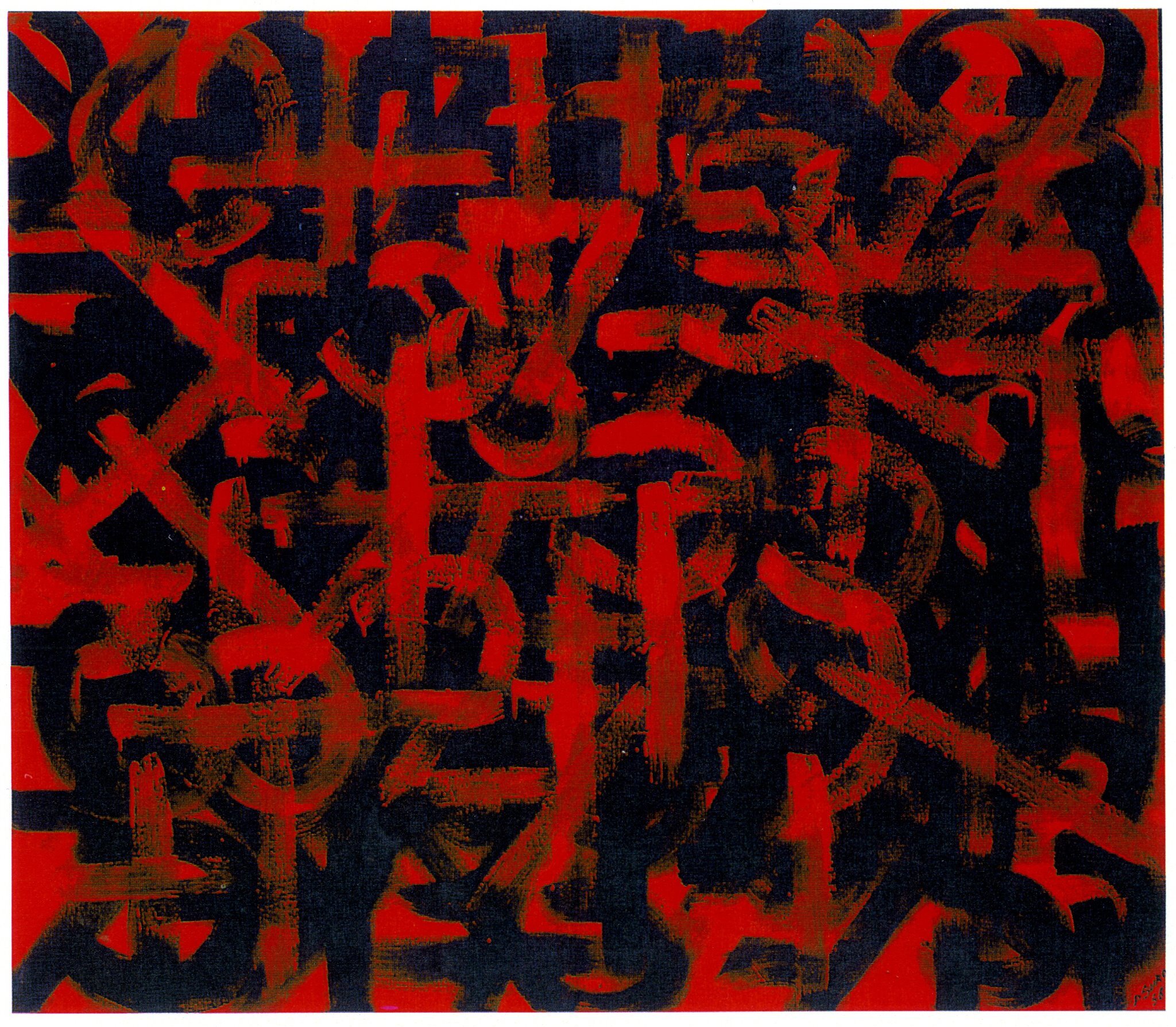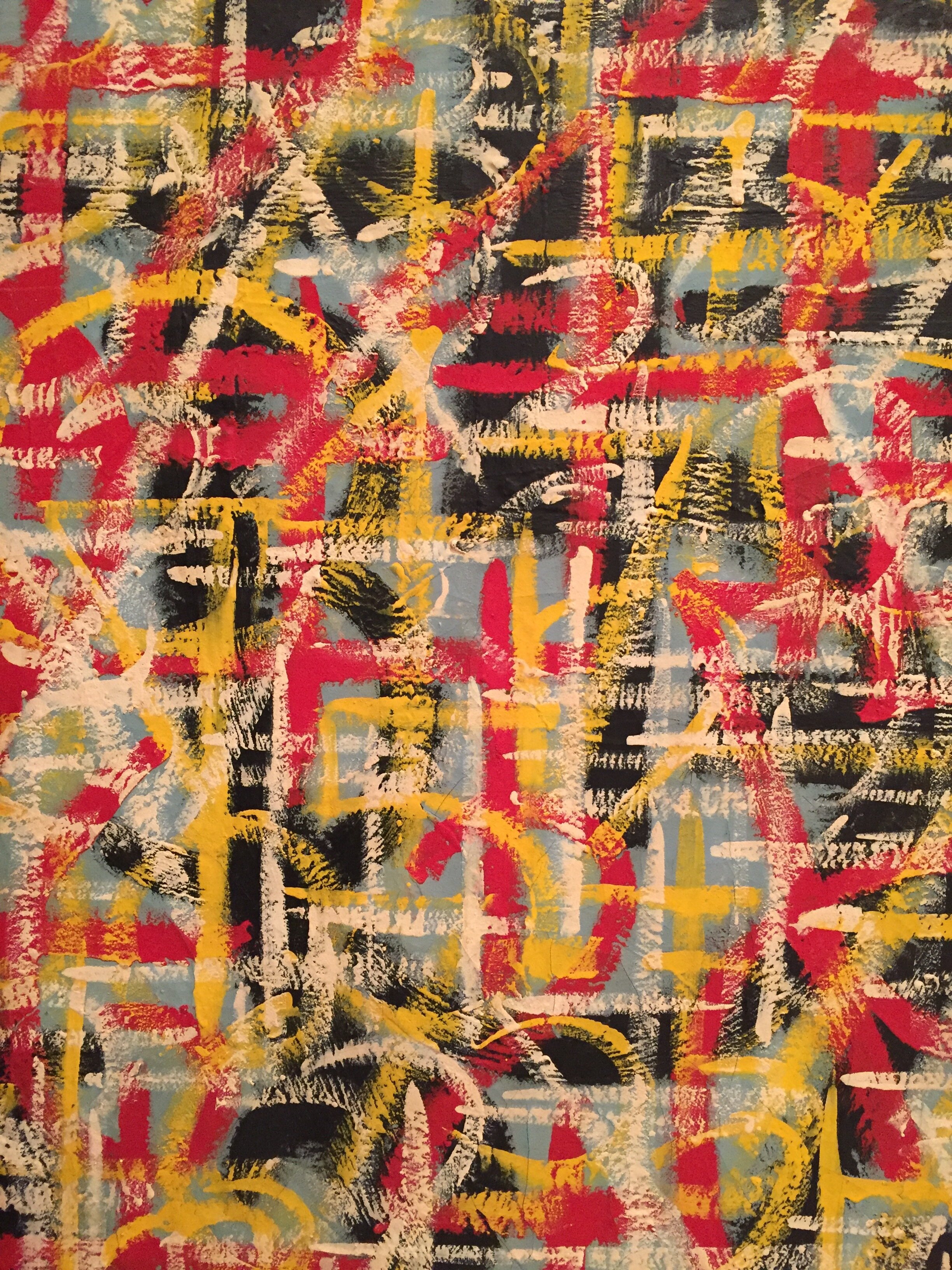FIFTH PHASE: NEW YORK
Dario Suro’s appointment as Cultural Attaché at the Dominican Embassy in Madrid was abruptly terminated by the Trujillo government in 1953. He returned to Santo Domingo (then Ciudad Trujillo) with his family. Shortly afterwards, a close friend of the Suros, who was related to the wife of the tyrant, warned them that Mrs. Trujillo was displeased that Suro was the only renowned Dominican artist who had not done a portrait of her husband, “El Jefe”. They were advised to leave the country immediately. Suro, who was fed up with playing the “Trujillista”, decided that leaving would decidedly be the best idea - a kind of blessing in disguise. The Suros left their children with relatives and departed for New York, where they were faced with the prospect of making a living with a limited command of English, taking up manual jobs. A year later they were thrilled to reunite with their children, Federico and Rosa, who arrived in the US accompanied by their grandmother.
Suro contacted the Rose Fried Gallery, the leading neoplasticist gallery at the time, and through this venue began to befriend persons who were placed in the upper echelons of the New York art world, including Fritz Glarner, Burgoyne Diller, Charmion Van Wiegand, Jean Arp, Adolf Fleischman, Ronnie Elliott, John Hultberg, Lynne Drexler and others. Suro became mesmerized and inspired by the new cultural climate he was immersed in.
Despite arduously toiling in a porcelain factory by day, Suro plunged into his painting like never before. He gradually left his European abstract style and shifted toward a more minimalist style, more allied to Piet Mondrian, and decidedly more attuned to the vibes of New York. Simultaneously, he began meeting other artists who were not in the camp of Rose Fried, a lot of whom he met at the Cedar Tavern, the renowned watering hole frequented by abstract expressionists. Fortuitously, he met Herman Somberg, a co-worker in the porcelain factory, an artist who introduced Suro to Franz Kline, one of the giants of American art, and a luminary in the Abstract Expressionist movement. This friendship was inestimable for Suro, serving as a new crucial influence, triggering a looser, expressionist approach. His number paintings that had been previously precise and clear, begin to disintegrate as they became more informal, bringing his art to yet another phase that culminates in his solo exhibit at the Poindexter Gallery in 1962, an exhibition that was an homage to Spain. Many of the works are entitled “Tauromáquia” and others are tributes to classic artists like Goya, whom he referred to as “my friend Goya”. Other important players of the New York art scene that he befriended included Philip Guston, Esteban Vicente, Jean Xceron, and Judith Rothschild.
Not only was Suro painting prolifically but he was also writing for important international publications, like “Cuadernos Hispanoamericanos” (Madrid) and “Aujourd’hui - Art & Architecture” (Paris). He was the first Latin American to write about Piet Mondrian and Stuart Davis. However, despite the rich stimulus from his immersion in the mid-century New York art world, he was on the verge of a nervous breakdown triggered by his work and the frenetic pace of the cultural world of the Big Apple. He was saved by a new diplomatic appointment that offered a more comfortable life. Recently installed President Juan Bosch, who had been a childhood friend, named him Cultural Attaché at the Dominican Embassy in Washington DC in 1963.
QUINTA ETAPA: NEW YORK
Así como en Mexico, Suro se encuentra con su cargo diplomático terminado por el gobierno de Trujillo después de cuatro años como Agregado Cultural en la Embajada Dominicana en Madrid, sin explicaciones, repentinamente! Regresa con su familia a Santo Domingo. Poco después, una persona que es casi familia de los Suros le informa a Maruxa Suro que la esposa del tirano ha comenzado a hablar de Dario Suro, diciendo que ella no se explica porque el pintor es el único artista Dominicano que no le ha hecho un retrato al Jefe. Y esta persona, quien era pariente de dicha esposa de Trujillo, le recomienda a la Señora de Suro que se vayan inmediatamente del país. Suro, quien está harto del juego Trujillista decide que efectivamente esta es la mejor idea. Los Suros dejan a sus hijos con parientes y se van a New York, un cambio nada fácil ya que no hablan inglés y tienen que ver como se van a hacer para poder trabajar. Encuentran trabajos que no están a su altura y después de un año sus llegan con su abuela de Santo Domingo. Suro imediatamente se pone en contacto con la Galería Rose Fried y de esta manera comienza a conocer personas de las altas esferas del mundo de arte de New York, incluyendo a Fritz Glarner, Burgoyne Diller, Charmion Von Wiegand, Jean Arp, Adolf Fleischman, Ronnie Elliott, John Hultberg y otros. Esta galería especializa en el arte Neoplasticista (que se pudiera llamar la escuela de Piet Mondrian, afamado pintor Holandés, quien deja sus huellas importantes no solamente en el arte de New York pero en escenario artístico internacional). Suro se queda muy impresionado con el nuevo clima artístico que está palpando
A pesar de su trabajo arduo y sin recompensas en una fábrica de porcelanas, Suro se pone a pintar como nunca. Va dejando su estilo Abstracto Europeo y lo remplaza con algo mas minimalista, más allegado a Mondrian, más New York. Al mismo tiempo comienza a conocer otros artistas que son lo opuesto del Grupo Rose Fried. Da la casualidad que en la fábrica donde trabaja conoce a Herman Somberg, el mejor amigo de Franz Kline, quien es una verdadera lumbrera, uno de los gigantes de la pintura Norteamericana . Hacen una amistad que es inestimable para Suro, la cual le sirve de una nueva influencia importante y de nuevo su pintura se convierte en algo más suelto, mas expresionista. Los cuadros de números, precisos y nítidos, que estaba realizando previamente, se aflojan y se desintegran, llevando su arte aún a otra etapa que se culmina en su exposición del 1962 en la Galería Poindexter, una muestra que es un homenaje a España y lo Español- la tauromaquia y sobre todo a Goya! Otros personajes importantes que llega a conocer en esta época - Philip Guston, Esteban Vicente, Jean Xceron, Judith Rothschild etc.
No solamente esta pintando de una manera prolífica, pero está escribiendo para revistas y periódicos importantes internacionales. Fue el primer Latino Americano que escribió sobre Mondrian y Stuart Davis. Pero a pesar del estímulo que le brinda la vida artística de Nueva York, se encuentra al punto de una crisis nerviosa, quizás su trabajo y la participación en mundo frenético cultural es demasiado. Lo que le salva la vida es un nuevo nombramiento Diplomático - Juan Bosch lo nombra Agregado Cultural en Washington en el 1963.



